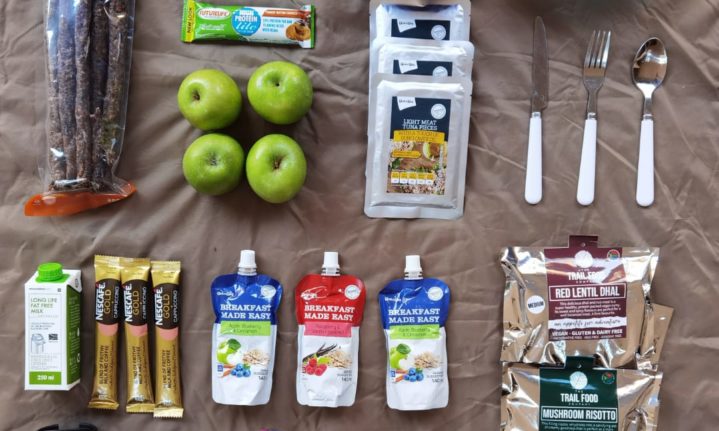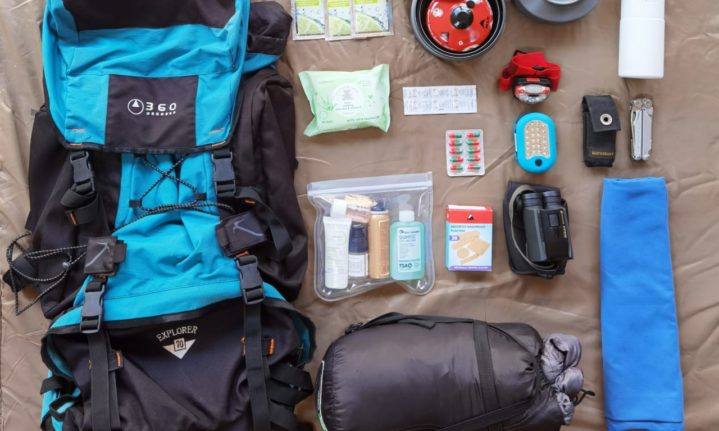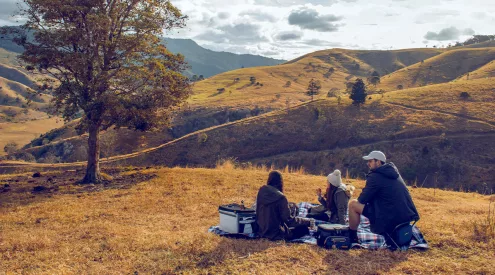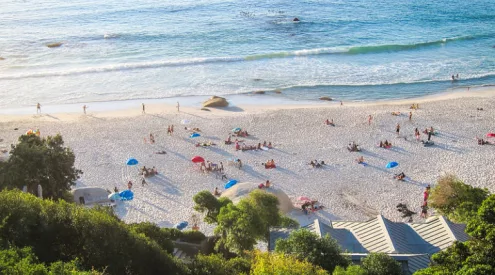Walking trails are regarded as one of the best ways to explore the bushveld. With your feet, eyes and ears to the ground, you tune into things you otherwise miss out on from the safety of a car.
On these kinds of trails, especially in Kruger National Park or greater Kruger, you have to bring all your clothes, food and equipment with you, and everything you’ll need for a good night’s sleep under the stars. You also need to be prepared to take everything out of the bush with you, so keeping trash to a minimum is in your best interest.
Here’s a comprehensive packing list for anyone new to walking trails, or for experienced trail lovers looking to pick up a tip or two.
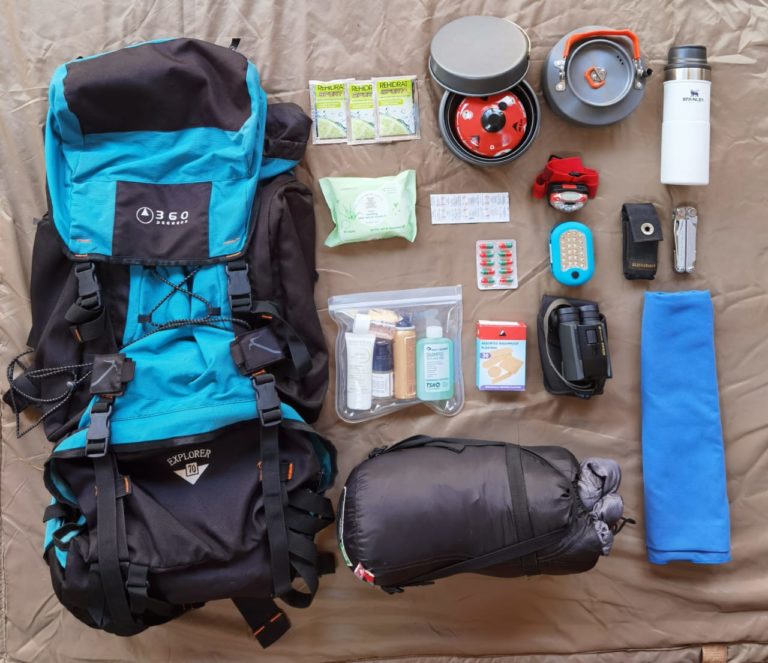
A good place to start is with a 70 L backpack. Anything smaller and you won’t be able to fit in everything you need, any bigger and it would become too cumbersome to carry through the bush.
It’s also important to pack the right sleeping bag for the right environment and season. For winter, it would be advisable to pack along a sleeping bag inner. Not pictured is a pillow, which is optional as it takes up space but even an inflatable airplane pillow can go a long way in terms of comfort when you’re sleeping on the ground.
Optional, but strongly advised is a decent poncho. Keeping your backpack dry is essential, and a canvas poncho could save you and your belongings from having to hang your life up in a tree after it rained. A poncho also doubles up nicely as a makeshift groundsheet to unpack your things in the evening.
Packing list:
- Foam mattress
- Sleeping bag
- Travel pillow
- Headlamp
- Torch (plus extra batteries)
- Poncho
- Binoculars (not compulsory, but great for a trail in the bush. The small Nikons pictured above are ideal)
- Quick-dry towel (small and lightweight)
- Gas cooker and pot/kettle
- Insulated flask for hot and cold drinks
- Pocket knife/ multi-tool
- Toiletries (best kept to a minimum and packed in a small bag)
- Wet wipes
- Suncream
- Mosquito repellent
- Medical aid kit (your guide would likely have one but things like plasters and painkillers are always good to have on hand)
- ‘Rehidrat’ sachets (Since you can only carry so much water, Rehidrat or Game sachets are great to add to your water bottle to help you stay hydrated).
- Water purification tablets (if necessary, depending on the location of the trail).
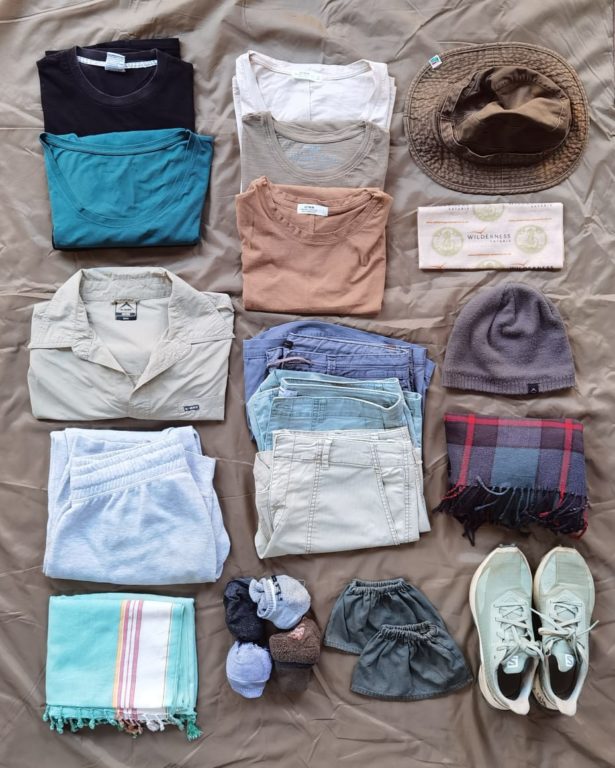
When it comes to packing clothes, it’s best to pack as light as possible but if you plan for a fresh set of clothes each day, then be prepared to carry the weight. It’s best to wear neutral colours for trails in the bush.
Essentials:
- Comfortable socks (plus an extra pair or two kept dry in a plastic bag. Wet socks can ruin a walking trail)
- Comfortable walking shoes
- Gaiters (essential for walking in the bush, to keep your feet, socks and ankles free from grass seeds and ticks)
- Tracksuit pants (for sleeping, and cold mornings and evenings)
- Long-sleeve top
- Shorts
- Tights (for walking in the cold)
- T-shirts
- Lightweight anti-UV button-down shirt (not compulsory but ideal for sun protection on hot days)
- Buff
- Sun hat
- Beanie
- Sunglasses
- Underwear (here you are allowed a fresh pair each day!)
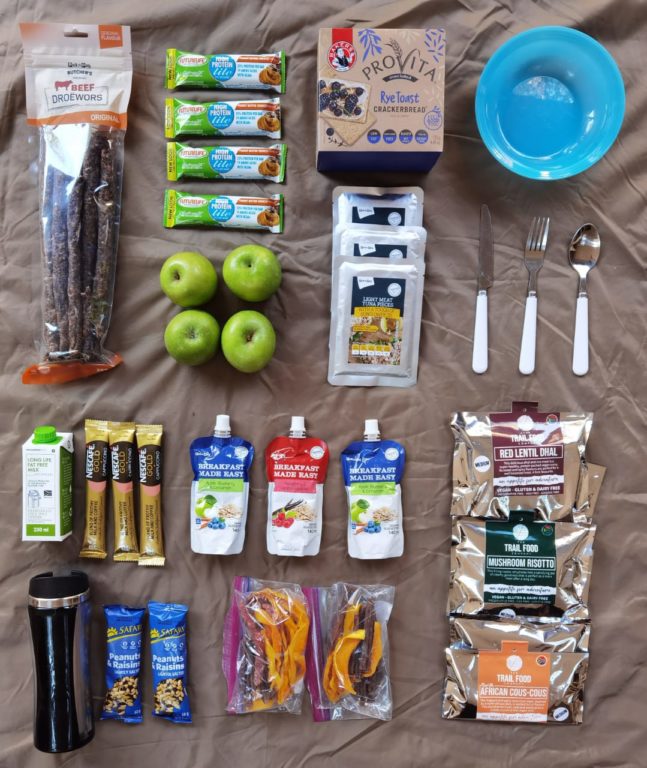
Packing food for a trail can be tricky, but you don’t have to completely sacrifice deliciousness for comfort.
This is a suggested shopping list for a non-vegetarian, but the biltong and tuna can be substituted with other things.
Breakfasts:
- Coffee sachets (don’t forget milk!)
- Ready-to-go-oats
Lunch:
- Tuna sachets (easier to pack and handle than the tins)
- Crackers or wraps, any vehicle for the tuna will do.
Dinner:
Dehydrated Trail Food Co. packs
Any ready-made dehydrated food pack will do, but these are delicious. Options include mushroom risotto, chilli con carne, red lentil dahl and a range of other meals, many of which are vegetarian-friendly. All you have to do is add hot water and you have a hearty meal prepared, in the middle of the bush.
Snacks:
- Biltong/ droëwors
- Dried mango
- Protein bars
- Apples (avoid soft fruit like bananas which will bruise)
- Peanuts and raisins
Pictures: Lauren Dold
ALSO READ
The ultimate guide to self-catering for 10 days in the Kgalagadi









